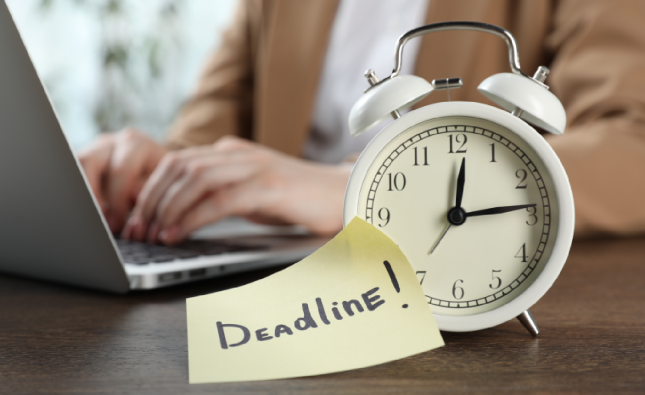Thinking about becoming self-employed? There are quite a few tax breaks and allowances out there that can really make a difference to your wallet. One of them is the trading allowance.
What is the trading allowance?
The trading allowance means that you can earn casual or miscellaneous income, up to a maximum of £1000 per tax year, before you need to pay income tax or National Insurance on it.
So, whether you’re doing some eBaying on the side, dog walking, babysitting, eyeing up a side-hustle, or anything else that brings in a bit of extra cash, then this one’s for you.
Who does the trading allowance apply to?
As a self-employed worker you would normally need to declare your income to HMRC by making a Self Assessment submission. You’d then have to pay income tax and National Insurance on any profits above the income tax threshold.
The trading allowance means that if you earn less than £1,000 from self-employment in a tax year, you don’t need to tell HMRC about it, or pay tax or NI.
This is great for anyone who just works very casually, perhaps to top up a salaried job. Just remember that you can only use the trading allowance on your self-employed income.
You can’t claim it against money that you earn from an employer – even if the employer is your own limited company or partnership. The whole point here is that the allowance only benefits those with very small businesses; micro entrepreneurs if you like.
Getting help if you’re not sure
If you’re not sure whether you will need to pay tax on your earnings or not, it’s well worth seeking the professional advice of an accountant. The last thing you want is to end up in hot water for not paying the right amount.
You might also find our Accounting for Freelancers section useful, as well as the Gov.uk website.
What happens if I go above the trading allowance?
If your self-employed activities go above £1,000 per tax year, you will need to tell HMRC – which means registering for Self Assessment, and submitting a return.
It’s really important that you monitor your finances and keep accurate records of what you’ve been earning, so that you know when the threshold is approaching!
You will also need to keep thorough records of things like your expenses and business costs.
What is the difference between profit and income?
The trading allowance threshold is based on income, not profit – so it’s important to understand the difference between the two.
Many people fall into the trap of thinking that income and profit are one and the same, but unfortunately, they’re not. They’re in fact two separate things that have very different effects on your business.
In very basic terms, income is all of the money that you receive. Profit is what’s left after you pay the bills.
Income
Income is money that individuals earn, for instance from a salary or pension, by becoming a landlord or through self-employment. It can essentially be divided into three categories:
- Earned Income: This is money you’ve made from working in a job. It could also be cash you’ve made from your small business, consulting, or even gambling. In a nutshell, if you’ve spent time and effort on something, and made money from it, this is earned income.
- Passive Income: Passive income is where a person makes money usually from renting something out. This could be a house for example, or it could be a driveway, garage, vehicle or other item of value. It’s usually a recurring income.
- Portfolio Income: This is income generated when you sell an asset for a higher price than you paid for it. This is also known as ‘capital gains’ and may therefore mean you need to pay Capital Gains Tax. Often portfolio income is the result of buying and selling property.
As a freelancer your income is likely to be unpredictable, especially at the beginning, which is another good reason why you should keep track of your business income and expenditure. That way you’ll know when you reach the threshold for paying tax.
Profit
Profit, on the other hand, is basically the money that’s left over after a business has taken off its expenses and costs.
Some freelancers will naturally have more outgoings that they need to deduct from their income too, for example stock or office costs. Many will also work from home which brings its own expenses and allowances.
Choosing between the trading allowance and claiming expenses
Unfortunately, you can only claim the trading allowance or expenses on your tax return, not both. This leaves you with a decision to make, but sometimes it can be confusing to know which one is best to choose when you do complete a Self Assessment tax return.
A good rule of thumb is to choose whichever one has the highest value.
- For example, if you have £1,500 of income, and £700 worth of allowable expenses, you could offset the expenses against your income, and pay tax on the remaining £800.
- Or, you could claim the £1,000 trading allowance instead, and pay tax on the remaining £500 – which means less tax to pay!
If your expenses are more than the maximum £1,000 trading allowance, it’s usually more efficient to claim tax relief on those instead.
For example, if you have £1,100 of expenses it means the amount you can deduct from your income is higher than the amount you can deduct with the £1,000 trading allowance.
It’s worth noting that you can only use the trading allowance up to the same amount as your income. In other words, if your income was £700, you can only use £700 of trading allowance to make your profit £0. This is known as “partial allowance”.
Find more guides and resources for freelancers in our online hub.








[…] good news is that everyone is entitled to the Trading Allowance, permitting you to earn up to £1,000 from self-employment in a tax year before you need to report […]